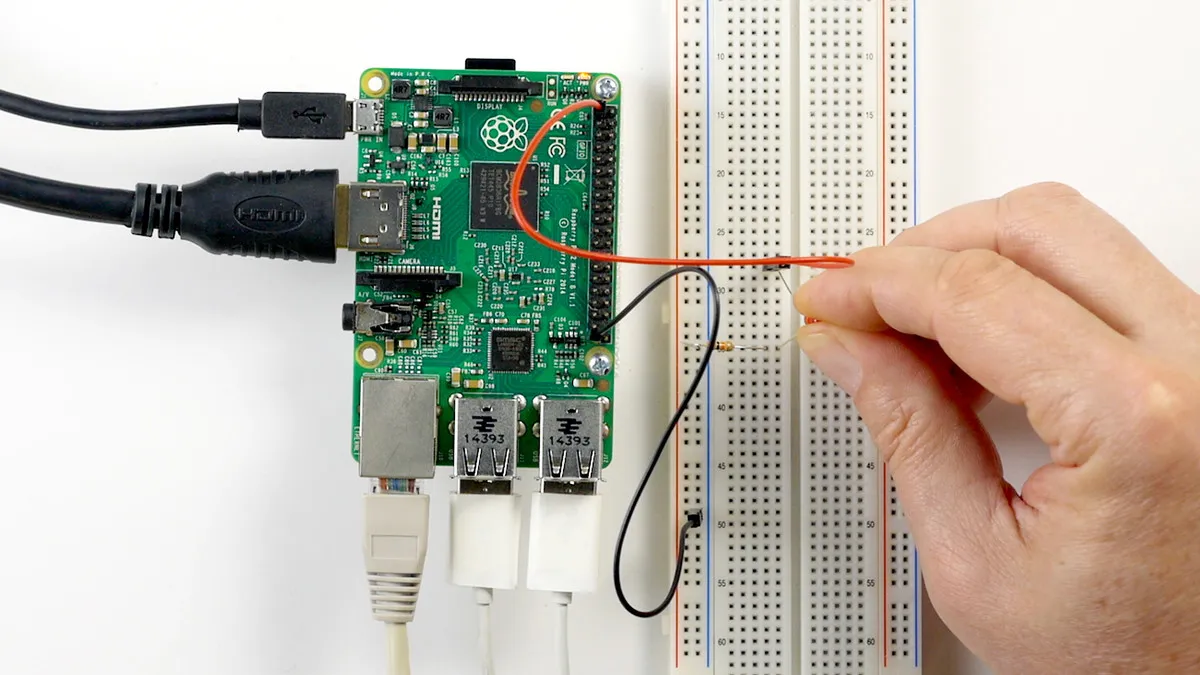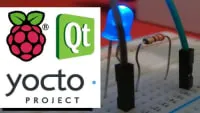
Raspberry Pi: GPIO 
This tutorial provides an introduction to the Raspberry Pi GPIO pins and how to program them to control lights, motors, read data from sensors, and interact with the Internet of Things. Learn how to identify pins and get started with Raspberry Pi GPIO. ▼
ADVERTISEMENT
Course Feature
![]() Cost:
Cost:
Free Trial
![]() Provider:
Provider:
LinkedIn Learning
![]() Certificate:
Certificate:
No Information
![]() Language:
Language:
English
![]() Start Date:
Start Date:
Self Paced
Course Overview
❗The content presented here is sourced directly from LinkedIn Learning platform. For comprehensive course details, including enrollment information, simply click on the 'Go to class' link on our website.
Updated in [March 06th, 2023]
This course provides an introduction to Raspberry Pi GPIO. Students will learn how to use the GPIO to control lights and motors, read data from sensors, and interact with the Internet of Things. The course will also cover WiringPi, a GPIO access library, and how to use it to experiment with pulse width modulation. By the end of the course, students will have a better understanding of how to control input and output through GPIO pins, opening up a whole new world of electronics.
[Applications]
The application of this course can be seen in a variety of projects. Students can use the Raspberry Pi GPIO to control lights and motors, read data from sensors, and interact with the Internet of Things. They can also use the WiringPi library to experiment with pulse width modulation. By controlling input and output through GPIO pins, students can explore a whole new world of electronics.
[Career Paths]
1. Robotics Engineer: Robotics engineers design, build, and maintain robots and robotic systems. They use their knowledge of electronics, mechanics, and software engineering to develop robots that can perform a variety of tasks. Robotics engineers are in high demand as the use of robots in industry and research continues to grow.
2. IoT Developer: IoT developers create applications and systems that allow devices to communicate with each other and the cloud. They use their knowledge of Raspberry Pi, Arduino, and other microcontrollers to develop applications that can be used in a variety of industries. As the Internet of Things continues to grow, the demand for IoT developers is expected to increase.
3. Embedded Systems Engineer: Embedded systems engineers design and develop embedded systems for a variety of applications. They use their knowledge of electronics, programming, and hardware to create systems that can be used in a variety of industries. As the demand for embedded systems continues to grow, the demand for embedded systems engineers is expected to increase.
4. Automation Engineer: Automation engineers design and develop automated systems for a variety of applications. They use their knowledge of electronics, programming, and hardware to create systems that can be used in a variety of industries. As the demand for automation continues to grow, the demand for automation engineers is expected to increase.
[Education Paths]
1. Electrical Engineering Degree: Electrical engineering is a field of engineering that deals with the study and application of electricity, electronics, and electromagnetism. This degree path focuses on the design, development, and implementation of electrical systems and components. Electrical engineers are in high demand in the tech industry, as they are responsible for the development of new technologies such as the Internet of Things (IoT).
2. Computer Science Degree: Computer science is a field of study that focuses on the design, development, and implementation of computer systems and software. This degree path is ideal for those interested in learning how to program and develop software applications. With the rise of the Internet of Things (IoT), computer science graduates are in high demand in the tech industry.
3. Robotics Degree: Robotics is a field of study that focuses on the design, development, and implementation of robotic systems. This degree path is ideal for those interested in learning how to program and develop robotic systems. Robotics is becoming increasingly important in the tech industry, as robots are being used to automate processes and tasks.
4. Mechatronics Degree: Mechatronics is a field of study that combines mechanical engineering, electrical engineering, and computer science. This degree path is ideal for those interested in learning how to design, develop, and implement robotic systems. Mechatronics is becoming increasingly important in the tech industry, as robots are being used to automate processes and tasks.
Course Syllabus
Welcome
What you will learn
What you should know
Using the exercise files
Course Provider

Provider LinkedIn Learning's Stats at AZClass
Discussion and Reviews
0.0 (Based on 0 reviews)
Explore Similar Online Courses

The Civil War and Reconstruction : 1865-1890: The Unfinished Revolution

Intarsia Knitwear Design and Creation

Python for Informatics: Exploring Information

Social Network Analysis

Introduction to Systematic Review and Meta-Analysis

The Analytics Edge

DCO042 - Python For Informatics

Causal Diagrams: Draw Your Assumptions Before Your Conclusions

Whole genome sequencing of bacterial genomes - tools and applications

Powering your Home Projects with Raspberry Pi

Creative Audio Programming on the Raspberry Pi


Start your review of Raspberry Pi: GPIO